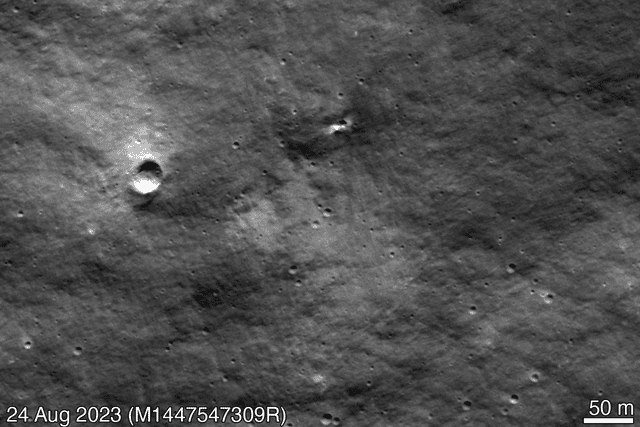Luna-25: crash landing site discovered by Nasa's Moon orbiter
and live on Freeview channel 276
The Luna-25 landing site has apparently been found.
The spacecraft span out of orbit and crashed into the Moon on 19 August during its attempt to soft land on the lunar surface.
Nasa's Lunar Reconnaissance Orbiter (LRO) has found the crater it left behind.
Advertisement
Hide AdAdvertisement
Hide AdThe LRO handlers went looking for the Russian spacecraft's final resting space, using an estimated impact site provided by Roscosmos, the Russian space agency.
The team imaged the area with the LRO's camera on 24 August and then compared the new photos with pictures of the same area which revealed a new crater.


In a statement, Nasa said: "Since this new crater is close to the Luna-25 estimated impact point, the LRO team concludes it is likely to be from that mission, rather than a natural impactor."
The new crater is around 33 feet (10 meters) wide and lies at about 58 degrees south latitude, on the steep inner rim of the moon's Pontécoulant G crater, the statement added. The impact site is roughly 250 miles (400 kilometres) from Luna-25's planned landing site, which lies at 69.5 degrees south latitude.
Advertisement
Hide AdAdvertisement
Hide AdLuna-25 was launched on 10 August, marking Russia's first Moon mission since 1976 - when it was the Soviet Union.
The spacecraft was aiming to become the first probe to soft land near the Moon's South Pole, a region thought to be rich in water and ice, with the potential to sustain human outposts.
According to Moscow Times, the Kremilin said that Russia will not give up its ambitions to land a craft on the Moon.
"We know that the way to the stars is through thorns. The main thing is to continue the Russian program," Kremlin spokesman Dmitry Peskov told reporters.
Advertisement
Hide AdAdvertisement
Hide Ad"The plans are quite ambitious and they will be realized," he said, adding that the failed mission was not a reason to "tear your hair out."
However, India's Chandrayaan-3 had the same aim, being launched on 14 July. Isro's mission was successful, landing on 23 August, and is now currently exploring that region for a total of 14 Earth days.
In the past few days, India's rover had to navigate its way around a 4-meter-wide crater which required a change in course, as it explores new territory.
Comment Guidelines
National World encourages reader discussion on our stories. User feedback, insights and back-and-forth exchanges add a rich layer of context to reporting. Please review our Community Guidelines before commenting.
